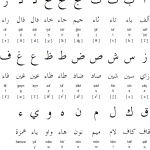1526 – 1857
The Mughal Empire began from Emperor Babur’s victory at the Battle of Panipat in 1526. The Empire grew in strength and splendour for almost two centuries.
Zahiruddin Muhammad Babur, reigned 1526 – 1530
Nasiruddin Muhammad Humayun, reigned 1530 – 1556
Jalaluddin Akbar, reigned 1556 – 1605
Nuruddin Muhammad Selim Jahangir, reigned 1605 – 1627
Shah Jahan, reigned 1627 – 1657
Abul Muzaffar Mohiuddin Muhammad Aurangzeb, reigned 1659 – 1707
While the reigns of the first Mughal rulers, Babur and Humayun, were characterized by the peripatetic instability of active military conquerors expanding their realm, under the third Mughal Emperor, Akbar, the empire was consolidated. Akbar, the ruler most discussed and portrayed in literature and film on the period, became the first Mughal Emperor of a stable empire while also continuing to extend his borders. This would continue under the reigns of his son, Emperor Jahangir, grandson, Emperor Shah Jahan, and great-grandson, Emperor Aurengzeb, under whom the extent of the empire reached its peak.
Jahangir’s court was particularly known for its richness; the Emperor made it a custom on his birthday to weigh himself, and distribute his weight in gold and jewels to the poor. And it was the son of Jahangir, Shah Jahan, who would go on to build the famed Taj Mahal in honour of his beloved wife, Mumtaz Mahal. Under the Mughals architecture, portraiture, textiles and many other arts flourished, with Mughal royal women playing a prominent role in promoting and patronising them.
The English at the Mughal Court
The court of Emperor Jahangir was particularly visited by European traders, including the first East India Company ambassador, William Hawkins, and the first official English ambassador, Sir Thomas Roe. William Hawkins made particular strides in gaining favour at the Mughal court, earning the title of the “English Khan”.
Sir Thomas Roe was the first official English Ambassador sent from the court of King James I to secure a trade agreement with the Indian monarch, Jahangir. Roe spent four years in India negotiating with the Mughal court yet ultimately failing to secure a deal. He maintained extensive memoirs of his experiences and maintained correspondence with England, published as The Embassy of Sir Thomas Roe to the Court of the Great Mogul, 1615-1619, which today forms a valuable document detailing an English outsider’s view of the Mughal realm. Particularly interesting in Roe’s memoirs is his discussion of Empress Nur Jahan, the favourite wife of Emperor Jahangir, who was known to have incredible influence over her husband and believed to have indirectly governed the empire. Indeed, upon arrival Roe’s letter from King James I was sent by Jahangir to Nur Jahan for her examination, and through much of his memoirs Roe makes clear the importance of winning favour with the Indian Empress in order to win favour with her Emperor.
Another English individual to have visited the Mughal realm was Sir Thomas Coryate. An eccentric wanderer known for travelling by foot, Coryate was an interesting early English tourist of India with impressive credentials. Not only did he travel to India by foot, but he also learned Persian, the official language of the Mughal realm. While Coryate spent four years refusing to learn anything of Indian language or culture and depending wholly on interpreters, Coryat managed to converse with Jahangir in fluent Persian, the official Mughal tongue, earning the sizeable sum of 100 pieces of silver from the monarch. Like Roe, Coryate also maintained memoirs and wrote extensive letters that record his experiences and observations during his travels.
Decline of the Empire
The death of Emperor Aurangzeb in 1707 ushered in a century and half of slow and agonizing decline culminating in the failed Indian Rebellion of 1857. The latter saw the last Mughal Emperor, Bahadur Shah Zafar, deposed by the British. The illustrious empire of the Mughals was ruined and imperial rule of the British Raj began.
-Lubaaba al Azami



